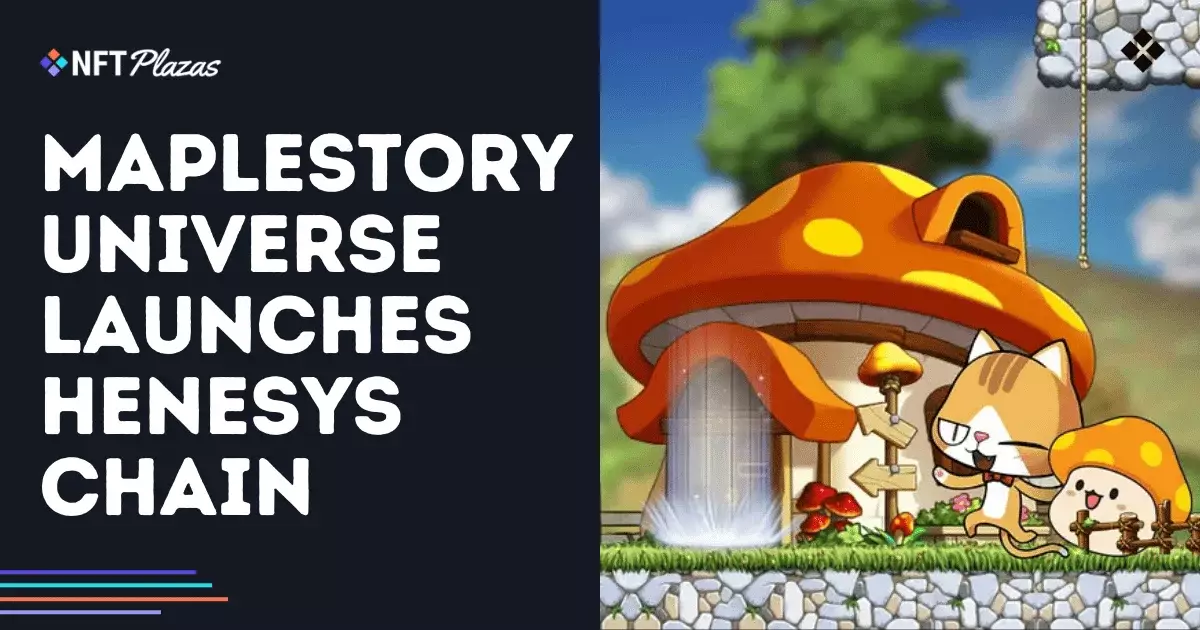The gaming industry has often seemed like a realm anchored in nostalgia, where beloved franchises remain confined to their historical roots. However, recent developments in the NFT (Non-Fungible Token) landscape, exemplified by the launch of the Henesys Chain, are forcing a paradigm shift that could redefine how games operate in the digital realm. Powering MapleStory Universe, the Henesys Chain will contribute to the broader narrative of gaming’s transition into Web3, adding a layer of complexity that compels us to rethink not just gaming mechanics, but the very fabric of player interaction and ownership.
As players increasingly seek ways to engage with their digital personas, the introduction of the Henesys Chain represents more than just a technical upgrade. It embodies a significant shift towards decentralization and community involvement. This is a bold move—not just towards improving player experience, but also in challenging entrenched systems that have often prioritized corporate profit over genuine player engagement.
Gasless Transactions: Removing Barriers or Enabling Consumer Apathy?
One standout feature of the Henesys Chain is its ability to facilitate gasless transactions. On the surface, this appears to enhance accessibility, allowing novice users to dive into blockchain gaming without the looming fear of transaction fees. Yet, we must ask: does this truly create an inviting environment, or does it risk lulling players into complacency? While minimizing friction can expand the player base, it may also foster a lack of ownership—a crucial aspect of what makes gaming rewarding. Players should feel the weight of their decisions and investments, not glide through experiences without consequence or investment.
By relying on meta-transaction technology, this new setup may inadvertently streamline interactions to the point of depersonalization. It is essential to remember that true engagement arises from the challenges faced and overcome; removing obstacles without care can dilute the sense of achievement that games have historically provided.
The Power of Scarcity and the Pitfalls of Centralization
Another enlightening aspect of the Henesys Chain is its permissioned model for minting NFTs, creating a controlled scarcity that seeks to enhance the intrinsic value of in-game items. While arguing in favor of preserving digital assets, one cannot ignore the inherent risk: consolidation of power. The vision of a player-driven economy may falter if only select entities control the minting process. The question remains: can we trust the central authority to keep the interests of the gaming community in mind, or will this lead to exploitation and a cash grab disguised as community engagement?
Decentralization has long been championed as a pathway toward player empowerment, yet the permissions model introduced raises concerns about monopolistic tendencies emerging within the gaming ecosystem. This contradiction could undermine the very raison d’être of a blockchain-driven model, turning what could be a diverse marketplace into one ripe for contention and mistrust.
Interactivity vs. Exploitation: Introducing the $NXPC Token
The participant-driven economy brought forth by the $NXPC token is a fascinating yet concerning aspect of the Henesys Chain. Touted as a currency designed to facilitate item creation and trading, one could argue it’s a fantastic way to cement a thriving gaming economy. However, we should also scrutinize how a monetized system could potentially lead to old systems re-emerging in new costumes of decentralization.
While the concept sounds promising, it brings an ethical dilemma: will the focus on trade and exchange divert attention from the essence of what gaming should represent—joy, creativity, and community? By linking gameplay to economic value, it risks transforming a passion into a transaction, rather than an experience driven by connection and shared enjoyment.
Building Community Trust: The Key to Success
In an environment increasingly wary of corporate motives and data exploitation, building community trust is paramount. The roadmap for the Henesys Chain, which includes a public blockchain explorer and rewards systems for developers, holds potential for fostering transparency. However, without sustained commitment to community engagement and feedback, even the most well-intentioned initiatives can fall flat.
The very spirit of a rich gaming experience lies in shared stories and dynamic interactions. While technological advancements like those within the Henesys Chain signal progress, it’s the dedication to real community-building and ethical considerations that will ultimately determine its success. A trustful relationship between developers and players may very well be the linchpin for ensuring that this new venture does not just distract from the past but builds a brighter and more inclusive tomorrow in the world of gaming.

